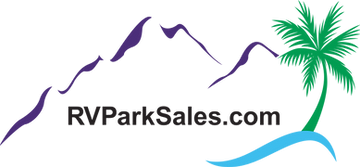RV parks are a growing investment trend. Here’s how to find yours! :
If you are a part of a growing segment of investors (experienced and novice), you’ve seen the increased interest in RV Park and Campground ownership. There’s a reason for that. RV Parks and Campgrounds (properly built and managed in the right location) can generate an excellent return on the investment. There are typically fewer headaches with tenants, and the maintenance can be lower than for example, apartment buildings.
Here’s an overview of the buying process:
Step 1: Determine Your Budget & Financing Options. SBA Loans are a good vehicle for first time buyers, or those with a lower dollar downpayment position. Private lenders see the viability of financing RV Parks, and there are available private lenders looking for your loan. Sometimes the Seller is your lender! Consider that as a possibility, but all Sellers are not open to carrying the financing. Usually, when a Seller puts a park on the market, they are ready to move on, without any further involvement. If you happen to be a cash buyer, you are in an excellent spot for negotiations and reduced financing costs.
Step 2: Choose a Location
Seasonal vs. year-round parks: Both have positives. The location of the park may dictate the seasonality of it, whether that is only open during the summer for our Northern parks, or, if in a mild climate, owners may only operate for Snowbirds visiting for 3 to 6 months at a time in the winter. (Or, many warm climate parks operate year round. If you can make the numbers work and are happy with the returns on a seasonal park, it leaves you with more personal time off!
Step 3: Search for Listings
Use RVParkSales.com, RV Park Store, LoopNet or Crexi for your beginning search. All have parks across the country, and work with Sellers and Brokers. You will want to seek out experienced RV Park and Campground Brokers, as this property type is not the same as many other commercial property types, and you will want a Broker who understands how RV Parks operate and what makes them profitable. You may want to consider hiring a Buyer Broker to represent you in the search, but that is a topic for another blog.
Step 4: Evaluate Property Financials
There are several key items you should know about when looking at Financials:
Net Operating Income (NOI): How much money is left after expenses? Add the total income, deduct operating expenses and determine the Net Operating Income. From that number you will want to determine a “cap rate” (capitalization rate). Here are the steps to get there:
EXAMPLE:
Selling Price: $4,000,000
Gross Income: $550,000
Expenses: (45%) – $247,500
Net operating income (NOI): $302,500.
The NOI divided by the Selling Price gives you the Cap Rate.
In this example the Cap Rate is 7.56.
Depending on the cost of the money it takes you to buy this park, that cap rate is “almost OK”, (depending on where interest rates are at that point in time). However, buyers love a higher cap rate, especially with high bank rates.
Now, take the same numbers as far as Gross and Net Incomes at a sales price of $3M and your cap rate is 10%. Much more favorable to the borrower. And the banker sees the value in the property at that Price/Cap Rate.
Occupancy rates:
How do we calculate occupancy rates?
If your park has 80 spaces times 365 days per year, you have 29,200 rentable nights for the year. If you calculate that you had 11,096 individual nights rented, your occupancy rate is 38%. (or 29,200 x 38%)
Step 5: Conduct Due Diligence
Once you’ve found the park, begin your Due Diligence. Part of this can be done prior to going to contract. Part can be done after a deal is struck. Your purchase contract is subject to all your inspections and discovery during the Due Diligence period.
These items include:
A Physical site inspection
Checking for permits
Water well and septic inspection if not on municipal services. If on septic and well, any reports from the county or records of Seller’s maintenance. Water well quality tests and capacity.
Environmental investigations
Checking Flood zones, environmental issues, asbestos, wetland studies, soils reports
If any onsite buildings, building plans with plumbing and electrical drawings if available.
Gathering all financial info from Sellers
Three years property tax records
Proof of current insurance
Obtaining a list of all included items in the sale
Any current existing contracts for services or maintenance agreements for the park
Detailed drawing of the park layout comparing to survey
Securing a Survey and maybe a Topographical map
Checking for any encroachments by surrounding land
Securing a copy of Sellers existing Title Commitment
Copies of all leases, rental agreements and contracts affecting the property
List of personal property and other equipment included
Copies of all current required operating licenses or permits
Step 6: Make an Offer & Close the Deal
At any point in discovery, you may proceed to write a Letter of Intent or a Purchase Agreement in order to tie up the property until all discovery can be made through the Due Diligence process. If the property is a “hot” property, go to contract first and work through the DD process. You have up until the end of your Due Diligence timeframe to walk away if any items discovered change your mind about purchasing.
In writing the Purchase Agreement, make sure it is clearly stated that your Earnest Money Deposit is Fully Refundable up until the expiration of your Due Diligence timeframe (usually 45 days). If you don’t cancel in writing prior to the end of the 45 days, your Earnest Money Deposit is at risk and likely retained by the Seller.
In Conclusion, take all the steps needed to make sure you are fully aware of all the aspects of owning this RV Park or Campground. You should not feel hurried to close a sale, but rather move forward confidently because you’ve done your homework!


